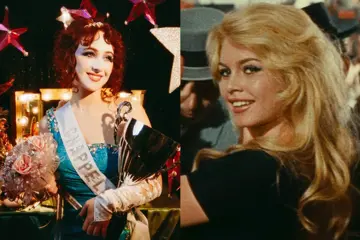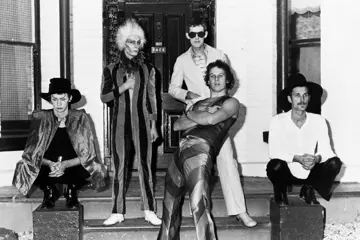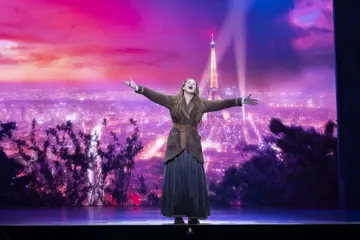★★1/2
In terms of the online discourse it’s generated, The Irishman seems more idea than movie. Martin Scorsese’s long-awaited crime epic is a film that is a real 'sign o' the times' title: something that can be employed to argue either for or against the very same ideas.
It’s at once new and old, a rallying cry and thing to decry, a symbol and straw man. It’s both a grand, prestige picture and a piece of streaming service fodder. It’s a valentine to ’70s American cinema and its iconic actors, while also being wholly indebted to new technology. It’s shot on celluloid but owes its entire existence to digital technology.
And, having been bankrolled by Netflix, it’s a feat of big-screen moviemaking that’ll be consumed on small-screens, not in the temple of the cinema but amid the glut of the streams. It’s the work of a master looking back on his own cinematic canon, but the only reason it exists is the blank-cheque largesse of a too-big-to-fail content portal. Its very existence feels like the product of cultural churn: a digital-era entertainment for an extremely-online time in which past and present are commingled together in the gaping maw of the all-consuming ‘feed’; the fact that its visual look evokes a world of deep-fakes only adding to this effect.
The Irishman is the 25th narrative feature by Scorsese, the 77-year-old legend of American movies. It’s his ninth film to star Robert De Niro, who’s now 76. And it’s forever conversant with their shared cinematic past: an almost meta-Scorsese movie that finds an old goodfella in a nursing home, looking back on his life of crime, as the director looks back on his life of crime-movies.
Don't miss a beat with our FREE daily newsletter
Loosely based on Charles Brandt’s loose book, I Heard You Paint Houses: Frank ‘The Irishman’ Sheeran And Closing The Case On Jimmy Hoffa, it finds its titular former mafia hitman (De Niro) recalling his life, circling around Hoffa’s 1975 ‘disappearance’. At times, this makes for a strange unfolding of nesting narratives: a man in his 80s recalling a time in his 50s which makes him think of his 30s; flashbacks occurring within flashbacks.
This is where costly de-ageing technology comes into things. Rather than employing the standard practice of taking young men and making them look weathered for their later years, Scorsese raids the rolodex of old New Hollywood icons —De Niro, Al Pacino, Joe Pesci, Harvey Keitel— and makes them young via the movie-magic of CGI. The effect is uncanny: The Irishman to Goodfellas what The Lion King was to, uh, The Lion King. And the effect is not always convincing: in a scene where De Niro is supposed to be in, I guess, his 30s, he kicks the shit out of a local greengrocer. But this doesn’t look like some young hoodlum, full of animal rage, tearing into a luckless fool over a triviality. Instead, this supposed 30-something moves, and kicks, like an old man trying not to fall over.
In such, The Irishman feels symbolic, in yet another way, of the limits of such de-ageing technology. Used for a brief flashback —especially in, say, a Marvel movie, where entire visual worlds are already being rendered by computer— this tech can be hugely effective. But for a whole — long, slow, ponderous — drama set in real, mundane locations, it’s distracting. You find yourself staring at every wart and wrinkle, every twitch and eye-twinkle, and imagining the endless hours of technical labour that went into such. Rather than connecting with the humanity of the story, such suspension of disbelief never occurs.
The Irishman is being praised for — in its old man-ish way — looking back on lives of crime/crime movies with a sense of regret; the violence here ugly and ultimately deleterious, taking lives, turning men toxic, ruining relationships. There’s still Scorsese needle-drops and ultra slow-motion and ironic juxtaposition and rise/downfall montages, but none of the same giddy thrill or bloodlust from when the filmmaker was young and hungry, a counter-cultural figure interrogating the horrors of American society. The pace is slow, the pauses plentiful, the details telling, the mood heavy. But there’s not much to the characters. De Niro is a company man, blithely doing the bidding of the gangsters he’s in thrall to. Pacino plays teamsters union-boss Hoffa like he’s doing a bad sketch-comedy impersonation of Al Pacino: hoo-haa-ing away. Watching him endlessly yell at people is quickly tedious.
As is, to be honest, much of the movie. For all its self-importance, this is yet another organised-crime saga. Maybe some viewers will find it charming to see Scorsese back doing Scorsese things; only with a sense of grandeur, weight, importance. But, peel away such narrativising, and you’re just watching yet another movie about people being ‘wacked’ and the power of the gun, another picture where men do manly things.
"The Irishman suffers from streaming-service bloat."
Women are few, and unimportant. Anna Paquin, playing De Niro’s grown-up daughter, makes several appearances before she’s actually allowed to talk. When she finally does, she gets three brief lines (one of them is “why?”). Then, in his droning voice-over, De Niro says: “She stopped talking to me that day,” and the effect is comic. She’s already been silenced in her presence, how are we going to notice the silence of her absence?
There’s no contrary voices to be found here: only the musings of its central character, and in turn its filmmaker. Perhaps this could have more charm were it whipped into shape, but The Irishman suffers from streaming-service bloat. Without the need to meet cinema-release criteria — to literally fit into screening schedules at theatres — the film sprawls out to an expansive 209 minutes; epic in length if nothing else.
In cinemas, where The Irishman is being shown for a brief pre-streaming window, this three-and-a-half hour tale is quite an undertaking. At home, where most viewers will see it, I can’t imagine a single person making it through the whole thing in one unbroken playing; this is a film that will be started and abandoned, be consumed over several sittings, get paused for plentiful breaks.
What does that mean for its movie-ness? What does that mean for movies in general? What does it mean that, when a legend of cinema wants to make a prestige-picture epic, the only studio that’d foot the bill is a streamer? There’s no real answers to these questions, but people will ask them anyway. The Irishman can be a starting point for plentiful big-picture conversation about the current climate of content-creation. Which gives it a certain cachet. But as a singular, standalone cinematic event — watching in a theatre, as a movie — it carries no such weight.















